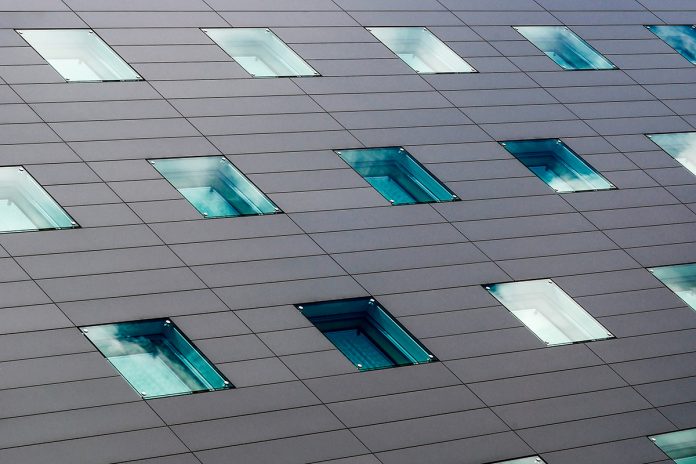As sponsors of Centre for Window and Cladding Technology (CWCT), Premier Guarantee is part of a unique forum that drives forward research and training projects. Clive Everett, Facades Technical Standards Director, discusses the top methods Premier Guarantee promote for onsite water tightness testing
The most common cause for façade failures is water leakage. Although tests for water tightness can be done offsite in laboratories using large-scale mock-ups, these do not take into consideration the impact of site workmanship.
There are three separate site tests to assess water tightness: the hose, the spray bar and the cabinet. However, the cabinet test, while it remains a technically feasible site test, does have a number of practical limitations so it is advised to use the other two tests on site.
Hose testing
Official Guidance: CWCT Section 9, AAMA 501-94
Summary: This method uses a compressor to create a strong jet of water through a nozzle. To ensure the test provides consistent results, the following must remain constant or at least measured each time:
Defined nozzle.
Pressure of water entering nozzle.
Flow rate of water through the nozzle.
The cone of water generated by the nozzle should be aimed perpendicular to the cladding.
The nozzle should be and kept at a fixed distance from the element that is being tested.
These parameters are defined within the AAMA 501-94 standard.
It should be noted that seals around doors and windows are made of softer seals to suit their primary function and hose testing of these joints should be avoided using this method unless the pressure of water is reduced. The spray bar test is more applicable to these types of joints.
Purpose: The testing of permanently sealed joints. (The hose spray should not dislodge gaskets or wet-applied sealants unless these have been poorly installed or not been allowed enough time to cure).
It is also suitable to use on sloped claddings.
Specifications:
The recommended nozzle is the Monarch Type B-25, #6.030.
Nominal water pressure is 220 ± 20kPa.
This produces a water flow of 22 ± 2 litres/minute with a cone angle of 30˚
Standard distance from nozzle to joint is 0.3m.
Joint is tested in 1.5m steps.
Method: At the beginning of the test, the area at the lowest horizontal joint being tested is wetted first. The test moves progressively upwards along the intersecting vertical joints to the next horizontal joint. The required rate at which the hose is moved along the joint is 30 seconds for every 1.5m length that is tested.
Where an offsite test has been carried out or the window/curtain wall system has previously been tested, the standard test pressures used in the offsite test should be used to calibrate the site hose test.
Spray Bar Testing
Official Guidance: CWCT Section 10, BS EN 13051
Summary: This test is designed to see how water spray interacts with the face of a cladding system. It is useful to determine water flow around penetrations through systems – a penetration may re-route the run-off on to a drainage opening or possibly on to a joint.
Purpose: This is to test open-jointed systems such as rainscreens, and façade elements that have opening joints such as cladding, unsealed patent glazing, opening lights or doors and smoke vents. It enables the designer to assess how water flows around penetrations and through systems.
Specifications:
Water is sprayed using a pressure range of two to three bar.
Flow rate should be kept to five litres/minute/metre length of spray bar.
Standard distance of spray to travel is 0.25m.
Spray bars with nozzles at 0.4m from cladding surface.
Method: The spray bar and nozzle should be aimed at the cladding face, preferably above the joint so the flow of water runs down over the joint. The water spray should be running for 30 minutes and signs for leakage should be observed on the internal surface.
General
When undertaking either spray bar or hose tests the services of a UKAS-accredited test house should be obtained.
Both test methods require that the internal finishes and infill materials are removed so that the source of any water that has penetrated the façade can be identified.
To assess whether the quality of the workmanship remains consistent it is recommended that a total of 5% of all fixed joints are tested, that all different joint arrangements are tested and that testing is phased throughout the building.
Please note: this is a commercial profile
Tel: 0800 107 8446














